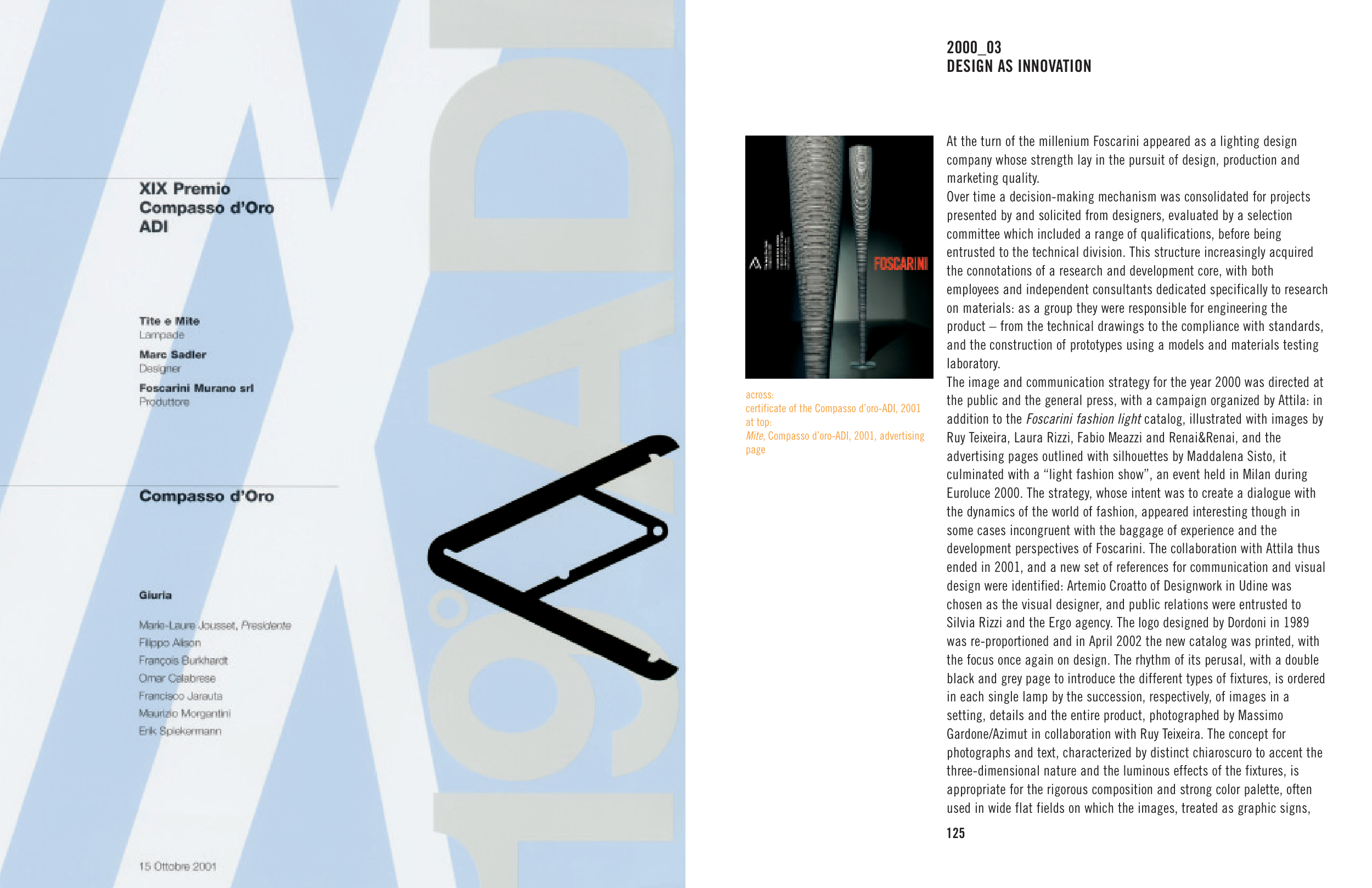125
2000_03
DESIGN AS INNOVATION
At the turn of the millenium Foscarini appeared as a lighting design
company whose strength lay in the pursuit of design, production and
marketing quality.
Over time a decision-making mechanism was consolidated for projects
presented by and solicited from designers, evaluated by a selection
committee which included a range of qualifications, before being
entrusted to the technical division. This structure increasingly acquired
the connotations of a research and development core, with both
employees and independent consultants dedicated specifically to research
on materials: as a group they were responsible for engineering the
product – from the technical drawings to the compliance with standards,
and the construction of prototypes using a models and materials testing
laboratory.
The image and communication strategy for the year 2000 was directed at
the public and the general press, with a campaign organized by Attila: in
addition to the Foscarini fashion light catalog, illustrated with images by
Ruy Teixeira, Laura Rizzi, Fabio Meazzi and Renai&Renai, and the
advertising pages outlined with silhouettes by Maddalena Sisto, it
culminated with a “light fashion show”, an event held in Milan during
Euroluce 2000. The strategy, whose intent was to create a dialogue with
the dynamics of the world of fashion, appeared interesting though in
some cases incongruent with the baggage of experience and the
development perspectives of Foscarini. The collaboration with Attila thus
ended in 2001, and a new set of references for communication and visual
design were identified: Artemio Croatto of Designwork in Udine was
chosen as the visual designer, and public relations were entrusted to
Silvia Rizzi and the Ergo agency. The logo designed by Dordoni in 1989
was re-proportioned and in April 2002 the new catalog was printed, with
the focus once again on design. The rhythm of its perusal, with a double
black and grey page to introduce the different types of fixtures, is ordered
in each single lamp by the succession, respectively, of images in a
setting, details and the entire product, photographed by Massimo
Gardone/Azimut in collaboration with Ruy Teixeira. The concept for
photographs and text, characterized by distinct chiaroscuro to accent the
three-dimensional nature and the luminous effects of the fixtures, is
appropriate for the rigorous composition and strong color palette, often
used in wide flat fields on which the images, treated as graphic signs,
across:
certificate of the Compasso d’oro-ADI, 2001
at top:
Mite, Compasso d’oro-ADI, 2001, advertising
page


